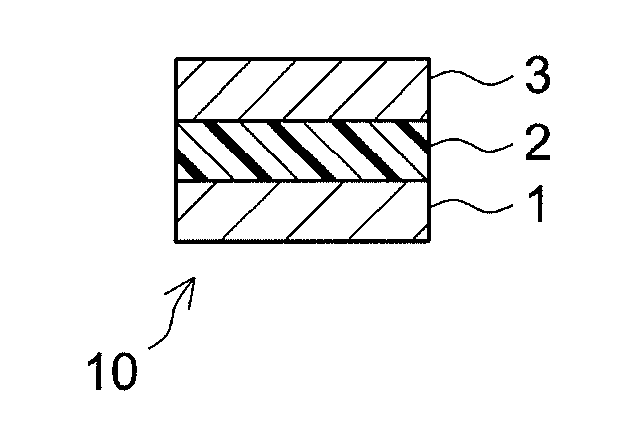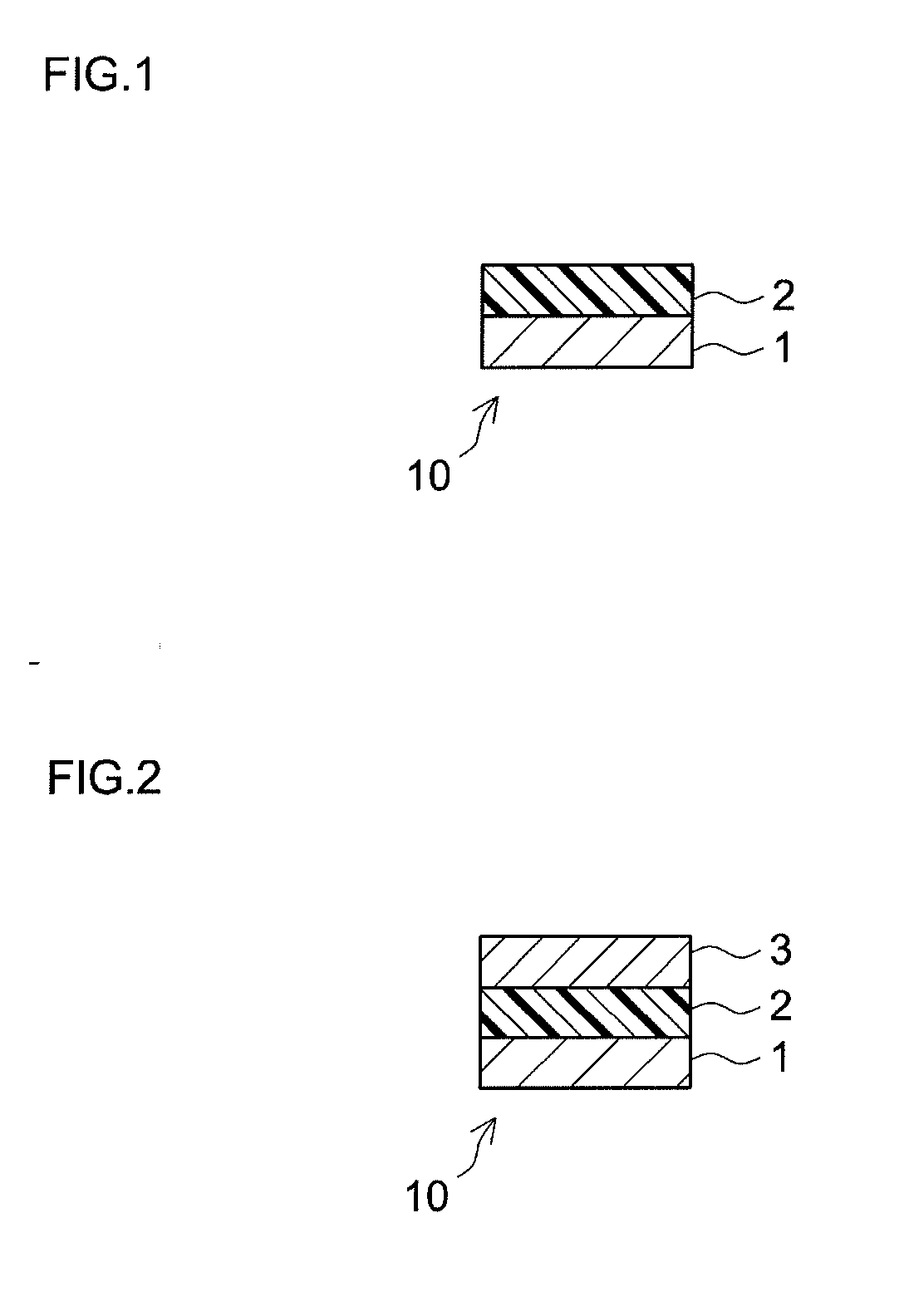Pressure-sensitive adhesive composition for surface protective films and use thereof
a technology of pressure-sensitive adhesives and protective films, applied in the direction of film/foil adhesives, polyether adhesives, film/foil adhesives, etc., can solve the problems of poor peeling efficiency, clear differences in peeling strength of protective films between tac sides, and cost incurred when peeling strength, etc., to achieve improved peeling strength, easy control, and superior balance
- Summary
- Abstract
- Description
- Claims
- Application Information
AI Technical Summary
Benefits of technology
Problems solved by technology
Method used
Image
Examples
example 1
[0114]200 parts of 2-ethylhexyl acrylate, 8 parts of 2-hydroxyethyl acrylate, 0.4 parts of 2,2′-azobisisobutyronitrile as polymerization initiator and 312 parts of ethyl acetate were placed in a four-mouth flask equipped with a stirring blade, thermometer, nitrogen gas feed tube and dropping funnel followed by introducing nitrogen gas while stirring gently, holding the temperature of the liquid in the flask to the vicinity of 60° C. and carrying out a polymerization reaction for 5 hours to prepare an acrylic polymer A solution (solid convent (NV): 40%). The weight average molecular weight (Mw) of this acrylic polymer A was 55×104, the glass transition temperature (Tg) was −55° C., and the acid value was 0.0.
[0115]A solution (NV: 40%) of the above acrylic polymer A was diluted, through addition of ethyl acetate, to NV: 20%. To 100 parts of this solution there were added 0.06 parts of polypropylene glycol diol (PPG) (by Wako Pure Chemical Industries) having a number-average molecular ...
example 2
[0119]A solution (NV: 40%) of the above acrylic polymer A was diluted, through addition of ethyl acetate, to NV: 20%. To 100 parts of this solution there were added 0.1 parts of PPG diol (by Wako Pure Chemical Industries) having Mn 3000, 0.8 parts of a trimethylolpropane / tolylene diisocyanate trimer adduct (by Nippon Polyurethane Industry, “Coronate L”, 75% ethyl acetate solution) as a crosslinking agent, 0.4 parts of dibutyltin dilaurate (1% ethyl acetate solution) as a crosslinking catalyst, with mixing and stirring for about 1 minute at normal temperature (25° C.), to prepare a PSA composition B2. A PSA sheet C2 was produced in the same way as in Example 1, with the exception of using B2 instead of the PSA composition B1.
[0120]A PSA composition B2a was prepared in the same way as in composition B2, with the exception of further adding 1 part of acetylacetone (viscosity immediately after preparation: 0.1 Pa·s). The pot life of the compositions B2, B2a was evaluated in accordance w...
example 3
[0121]Herein, 0.2 parts of PPG triol (by Wako Pure Chemical Industries) having Mn 700 were used instead of the PPG used in Example 1. Otherwise, a PSA composition B3 was prepared in the same way as in Example 1. A PSA sheet C3 was produced in the same way as in Example 1, with the exception of using B3 instead of the PSA composition B1.
[0122]A PSA composition B3a was prepared in the same way as in composition B3, with the exception of further adding 1 part of acetylacetone (viscosity immediately after preparation: 0.1 Pa·s). Upon pot life evaluation, B3 gelled, and B3a exhibited a viscosity of 0.1 Pa·s.
PUM
| Property | Measurement | Unit |
|---|---|---|
| Tg | aaaaa | aaaaa |
| Tg | aaaaa | aaaaa |
| Tg | aaaaa | aaaaa |
Abstract
Description
Claims
Application Information
 Login to View More
Login to View More - R&D
- Intellectual Property
- Life Sciences
- Materials
- Tech Scout
- Unparalleled Data Quality
- Higher Quality Content
- 60% Fewer Hallucinations
Browse by: Latest US Patents, China's latest patents, Technical Efficacy Thesaurus, Application Domain, Technology Topic, Popular Technical Reports.
© 2025 PatSnap. All rights reserved.Legal|Privacy policy|Modern Slavery Act Transparency Statement|Sitemap|About US| Contact US: help@patsnap.com


